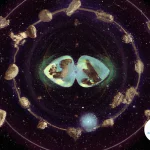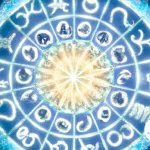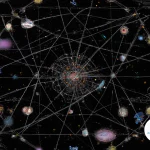Unlocking the Secrets of Astrology Chart Dynamics
Have you ever wondered how the alignment of celestial bodies can shape and influence our lives? Astrology charts provide a fascinating insight into our personalities, relationships, and life events. Among the intricate details captured within these charts are aspects, which reveal the dynamic connections between planets and their energies. Understanding aspects is a vital component in deciphering the complexities of astrology. In this comprehensive guide, we will delve into the world of aspects step-by-step, unraveling their meanings and exploring their profound impact on our charts. Whether you are a seasoned astrologer or a curious beginner, this article aims to demystify aspects and illustrate how they can be used to gain valuable insights into your own astrological chart. So, grab your celestial compass and let’s embark on a cosmic journey of self-discovery.
What are Aspects in Astrology?
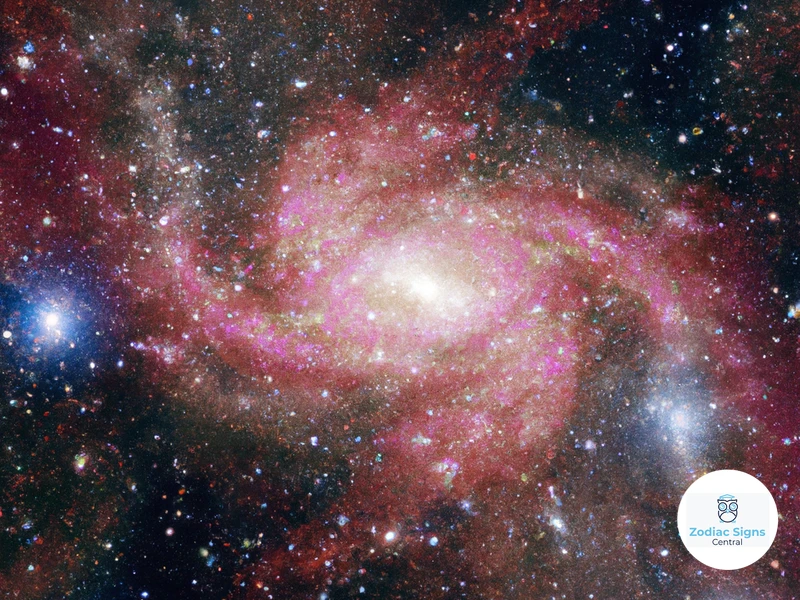
Aspects in astrology refer to the angular relationships between planets or points in an astrological chart. These relationships indicate the energetic connections and interactions between different celestial bodies, offering valuable insights into their combined influence on an individual’s life. The aspects form the foundation of astrological interpretation, allowing astrologers to identify patterns, themes, and potentials within a chart.
To better understand aspects, let’s imagine the astrological chart as a cosmic dance floor, with each planet representing a different dancer. Aspects are the dynamic and intricate steps these dancers take in relation to one another. Some steps may bring the dancers close together (conjunction), while others create tension and distance (opposition). Each aspect has its own unique symbolism and impact on the overall chart dynamics.
There are several key aspects in astrology, each with its own significance and meaning. These include:
- Conjunction: This aspect occurs when two planets align closely within the same degree, merging their energies and characteristics.
- Opposition: In an opposition aspect, two planets stand directly across from each other in the chart, creating a polarizing energy that often brings contrasting forces into play.
- Trine: A trine aspect forms between planets that are 120 degrees apart, creating a harmonious flow of energy and facilitating ease and compatibility.
- Square: Square aspects occur when two planets are 90 degrees apart, symbolizing tension, challenges, and the need for growth and transformation.
- Sextile: This aspect forms between planets that are 60 degrees apart, signifying opportunities, creativity, and a harmonious blending of energies.
Understanding the meanings and dynamics of these aspects is essential for astrologers to paint a complete picture of an individual’s chart. These aspects provide valuable clues about the strengths, challenges, and potentials in various areas of life, such as relationships, career, and personal growth. By analyzing the aspects in an astrology chart, astrologers gain deeper insights into the complex tapestry of a person’s life, helping them to navigate and understand the forces at play.
Key Aspects and Their Meanings
Astrology offers a vast array of key aspects, each with its own unique meanings and influences on an individual’s astrological chart. Let’s explore some of these aspects to gain a deeper understanding of their significance. The conjunction aspect represents a merging of energies, creating powerful alliances between planets. It intensifies the qualities of the planets involved and can indicate a strong focus in a particular area of life. The opposition aspect, on the other hand, represents a balancing act between opposing forces, highlighting the need to find harmony and integration within contrasting energies. A trine aspect signifies flow and ease, bringing together planets that share compatible energies and facilitating smooth expression and cooperation. The square aspect presents challenges and growth opportunities, often prompting individuals to confront and transform obstacles in their lives. Lastly, the sextile aspect brings creativity and opportunity, opening doors for harmonious collaborations and the blending of energies. Each aspect has its own unique dynamics and implications, providing astrologers with a rich tapestry of information to interpret and analyze in astrology charts. Understanding these key aspects and their meanings is crucial in unlocking the deeper layers of an individual’s astrological blueprint.
1. Conjunction
1. Conjunction: In astrology, a conjunction is an aspect that occurs when two planets align closely within the same degree, appearing to merge their energies and characteristics. This alignment creates a powerful and intense energy, as the planets involved work together and reinforce each other’s influence. A conjunction signifies a blending and amplification of the energies involved, resulting in a strong emphasis on the qualities and themes represented by the planets.
When two planets form a conjunction, their combined influence can have a profound impact on an individual’s personality and life experiences. The specific meaning of a conjunction depends on the planets involved. For example, a Sun-Moon conjunction signifies a strong integration of one’s conscious ego (Sun) and emotional nature (Moon), leading to a deep sense of self-identity and emotional expression.
Conjunctions can also occur between planets and significant points in the chart, such as the Ascendant, Descendant, Midheaven, or Nadir. These conjunctions further highlight the importance and intensity of the planet’s influence on areas of life represented by those points. For example, a Venus-Midheaven conjunction may indicate that one’s relationships and social life hold significant importance in their career and public image.
It’s important to consider the elemental nature and the zodiac signs involved in a conjunction to gain a deeper understanding of its expression. For instance, a conjunction between Mars and Venus in a fire sign can result in passionate and dynamic relationships, while the same conjunction in an earth sign may manifest as practical and goal-oriented partnerships.
In an astrology chart analysis, examining the conjunctions is crucial for understanding the core themes and dynamics of an individual’s life. Conjunctions highlight the areas where one’s energy is concentrated and where they may experience both challenges and opportunities. By identifying the planets involved and their corresponding qualities, astrologers can provide valuable insights into an individual’s personality, relationships, and life path.
2. Opposition
In astrology, the opposition aspect is a significant and dynamic connection between two planets that are directly across from each other in an astrological chart. This aspect is characterized by a 180-degree angle between the two planets, creating a sense of opposition and tension. The opposition aspect represents a powerful energy that brings together polarities, contrasting forces, and the need for balance and integration.
When two planets form an opposition, they often represent opposing qualities or energies that can manifest in various areas of life. For example, the opposition between the Sun and Moon reflects a tension between individuality and emotions. This aspect may bring challenges in reconciling personal desires with emotional needs.
The opposition aspect serves as a catalyst for growth, highlighting areas of conflict and providing opportunities for resolution and harmony. It encourages individuals to find a middle ground between the energies represented by the opposing planets. This aspect can bring a sense of awareness and understanding of contrasting perspectives, leading to personal growth and development.
It is important to note that the opposition aspect does not necessarily indicate negative or adversarial situations. Rather, it signifies the need to find a balance and integrate opposing energies in order to achieve wholeness. By acknowledging both sides of the opposition and finding ways to navigate the tension, individuals can harness the power of this aspect for personal and spiritual growth.
In interpreting the opposition aspect in an astrology chart, astrologers consider the specific planets involved. Each planet carries its own energy and symbolism, and their opposition can create a push-pull dynamic that influences various areas of life. For example, the opposition between Venus and Mars may manifest in relationships, embodying the tension between love and desire.
Understanding the opposition aspect in an astrology chart provides valuable insights into the internal and external forces at play. It highlights areas of potential conflict, challenges, and growth opportunities. By embracing the lessons and working with the energies of the opposition, individuals can navigate these dynamics and find greater harmony and integration within themselves and their experiences.
3. Trine
A trine aspect in astrology is formed when two planets are approximately 120 degrees apart in the astrological chart. This aspect is considered highly harmonious and favorable, symbolizing the flow of positive energy and ease between the planets involved. The trine aspect creates a sense of natural affinity and cooperation, allowing the energies of the planets to work together in a productive and beneficial manner.
When two planets are in a trine aspect, they support and enhance each other’s qualities, creating a synergy that amplifies their positive traits. This can result in a sense of ease, creativity, and natural talents in the areas of life associated with the planets involved. The trine aspect often signifies innate gifts and abilities that come effortlessly to an individual.
For example, a trine between Venus (representing love, beauty, and harmony) and Neptune (representing imagination, spirituality, and empathy) suggests a profound sense of artistic talent, creativity, and charm. This aspect may manifest as natural artistic abilities, an inclination towards poetry, music, or acting, and an ability to connect deeply with others on an emotional and spiritual level.
In terms of opportunities, the trine aspect indicates favorable circumstances and smooth-sailing in the areas of life related to the planets involved. It suggests that the individual may encounter supportive and beneficial circumstances without much struggle. However, it’s important to note that while the trine aspect brings positive energy, it can also lead to complacency if one relies too heavily on this natural harmony.
Astrologers consider the trine aspect as a positive asset in a birth chart, as it signifies areas of life where an individual may experience innate abilities, talents, and opportunities. It’s important to embrace and develop these strengths while also recognizing the need for effort and growth in other areas of life.
Understanding the trine aspect allows astrologers to provide valuable insights into an individual’s strengths and potentials. By examining the planets involved in the trine and the houses they rule, astrologers can guide individuals towards harnessing and maximizing their natural talents, leading to personal fulfillment and success in those areas.
(Reference: Retrograde Planets in Natal Chart Analysis)
4. Square
Square Aspect in Astrology
The square aspect is a powerful and dynamic aspect that occurs when two planets are 90 degrees apart in an astrological chart. This aspect creates a sense of tension, challenge, and friction between the planets involved, which often prompts growth and transformation. It signifies a clash or conflict between the energies represented by the planets, urging individuals to take action in order to resolve the inherent challenges.
When planets form a square aspect, they create a push-pull effect, where their energies may seem at odds with each other. This can lead to internal and external struggles, as individuals grapple with conflicting desires and motivations. The square aspect acts as a catalyst for change and personal development, prompting individuals to confront and overcome obstacles.
For example, a square aspect between Mars and Saturn may bring about a clash between assertiveness and discipline. Mars represents action, drive, and passion, while Saturn represents responsibility, restriction, and structure. The square aspect between these two planets can create a tension between impulsiveness and caution, forcing individuals to find balance in their approach.
In terms of interpretation, the square aspect encourages growth through challenges. It highlights areas of life where individuals may face obstacles or inner conflicts, ultimately leading to personal development and transformation. The square aspect also offers opportunities for resilience, perseverance, and the ability to navigate difficult situations.
It is important to note that the square aspect is not inherently negative. While it may bring tension and challenges, it also offers valuable lessons and opportunities for growth. The key is to embrace and work with the energies of the planets involved, finding constructive ways to channel their influences.
Understanding the square aspect and its implications is essential in astrology as it helps shed light on the complexities and dynamics within an individual’s chart. By analyzing the squares, astrologers gain insights into the areas of life where individuals may encounter struggles, and where they have the potential to overcome obstacles and achieve personal growth and transformation.
5. Sextile
The sextile aspect in astrology occurs when two planets are approximately 60 degrees apart in the astrological chart. It represents a harmonious and supportive connection between the planets involved. The energy created by the sextile is generally positive and allows for easy flow and cooperation between the planets.
When two planets form a sextile aspect, they work together synergistically to activate and enhance each other’s qualities. This aspect is often associated with opportunities, creativity, and growth. It facilitates the blending of energies, enabling individuals to tap into their potential and manifest their desires.
In terms of interpretation, the sextile aspect signifies favorable circumstances and easy cooperation. It represents areas of life where things can naturally fall into place and flow smoothly. Proactive engagement with the opportunities presented by the sextile can lead to positive outcomes and personal development.
For example, if there is a sextile between Venus and Mars in a birth chart, it indicates that the person may experience harmonious relationships and a balanced approach to love and passion. They might possess a natural magnetism that attracts enjoyable social interactions and opportunities for romance. This aspect encourages the individual to embrace their passions, pursue creative endeavors, and find joy in their interpersonal connections.
It’s important to note that while the sextile is generally regarded as a positive aspect, it can sometimes be overlooked or underutilized. Individuals may need to make a conscious effort to actively engage with the energies of the sextile and seize the opportunities it presents. By recognizing and taking advantage of the supportive energies of the sextile aspect, individuals can navigate life with greater ease and fulfillment.
Understanding the specific influences of a sextile aspect in an astrology chart is crucial for gaining insights into an individual’s strengths, talents, and areas that may be ripe for growth and personal development. By embracing the potential offered by the sextile aspect, individuals can harness the favorable energies to create a fulfilling and harmonious life path.
For more information on how aspects, including the sextile, can influence your career path, you can explore the significance of the Midheaven in astrology. Alternatively, you may also find it interesting to learn about the role of Saturn in timing events within the context of astrology.
How Aspects Influence the Chart
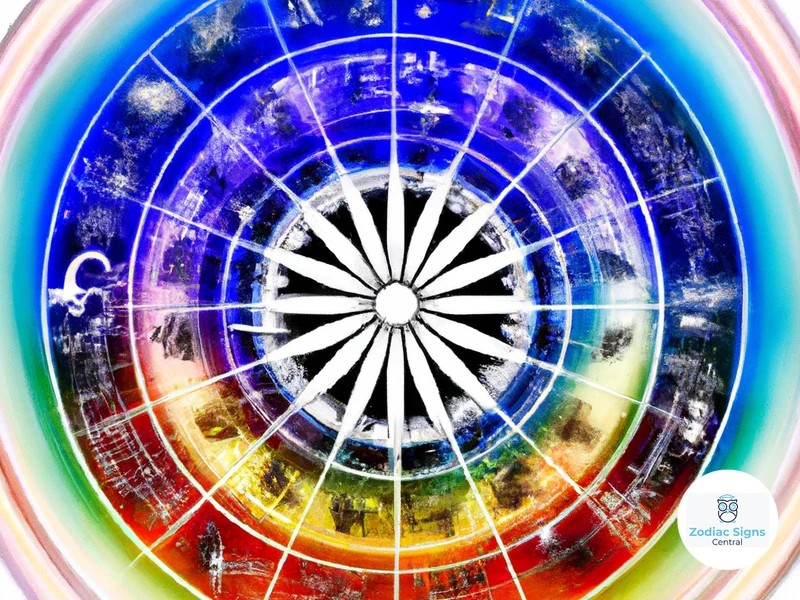
Aspects exert a profound influence on an astrology chart, shaping the dynamics and energies within it. There are several key factors that determine how aspects influence the chart:
- Strength of Aspect: The strength of an aspect is determined by the closeness of the degree between the planets involved. A close aspect has a more potent effect, while a wider aspect may have a milder influence.
- Planets Involved: The specific planets involved in an aspect bring their unique qualities and energies to the chart. For example, a Venus-Mars opposition may highlight themes of love, passion, and conflict in relationships.
- Orbs: Orbs refer to the allowance for a slight deviation in degrees when considering the closeness of an aspect. Different astrologers have varying opinions on orbs, but they generally indicate the tolerance for a slightly wider aspect.
- House Placement: The houses in which the planets are placed within the chart further enhance the influence of the aspect. For instance, a Sun-Moon conjunction in the 10th house may emphasize a strong sense of identity and purpose in one’s career.
The interactions between these factors contribute to the overall impact of aspects in the chart. They provide a nuanced understanding of how the planetary energies blend and interact, shaping the individual’s personality traits, challenges, and opportunities. By thoroughly considering these aspects, astrologers gain valuable insights into a person’s life path, relationships, and personal growth.
1. Strength of Aspect
When it comes to aspects in astrology, the strength of an aspect plays a crucial role in determining its impact on the chart. The strength of an aspect refers to how closely two planets align and the orb or allowable range within which the aspect is considered valid. The tighter the orb, the stronger the aspect. If the planets are within a few degrees of each other, the aspect is considered a tight or strong aspect. These aspects tend to have a more significant influence on the individual’s life and can be more easily felt and observed.
On the other hand, if the planets are further apart within the allowable range, the aspect is considered a wider or weaker aspect. While these aspects may still have an influence, their effects might be less pronounced or more subtle. It’s important to consider the strength of the aspect when analyzing a chart to understand the intensity and prominence of its influence.
Additionally, the strength of an aspect can be influenced by the signs and houses involved. For example, a harmonious trine aspect between planets in compatible signs and supportive houses would generally be considered stronger. Conversely, a challenging square aspect between planets in conflicting signs and houses might be more volatile and intense.
Astrologers consider the strength of aspects when interpreting charts by determining which aspects are more significant and which are more background influences. Stronger aspects often indicate areas of focus and importance, while weaker aspects might serve as supporting factors in the overall dynamics of the chart.
Understanding the strength of aspects is essential for accurately interpreting the astrological chart and gaining insight into the varying degrees of influence that different aspects have on an individual’s life. By considering the strength of aspects, astrologers can provide more nuanced and detailed readings that capture the full complexity of the individual’s chart.
2. Planets Involved
When interpreting the aspects in an astrology chart, one crucial factor to consider is the specific planets involved in the aspect. Each planet in astrology represents different energies, archetypes, and aspects of our personality and life experiences. The planets involved in an aspect significantly influence the dynamics and meaning of that aspect.
For example, a conjunction between the Sun and Moon signifies a powerful blending of the conscious (Sun) and unconscious (Moon) aspects of the individual. This aspect often represents a deep sense of self-awareness and emotional alignment. On the other hand, a conjunction between Mars and Uranus represents a fiery combination of assertiveness (Mars) and unpredictability (Uranus), highlighting an individual’s need for freedom and individuality.
Each planet carries its unique energy, symbolism, and themes, which intersect and interact through aspects in an astrology chart. For instance, a trine between Venus and Jupiter suggests a harmonious connection between love (Venus) and optimism (Jupiter), portraying a person who is naturally inclined towards joy, abundance, and harmonious relationships.
Examining the planets involved in aspects helps astrologers identify the specific areas of life impacted by the aspect. For instance, a square aspect between Mercury and Saturn may indicate challenges or obstacles in communication and learning, highlighting the need for patience and discipline in intellectual pursuits.
By deeply understanding the planets involved in an aspect, astrologers can unravel the intricate layers of an individual’s chart and provide detailed insights into their personality, motivations, strengths, and challenges. It is through this analysis that a more nuanced and comprehensive understanding of a person’s astrology chart can be achieved.
3. Orbs
When studying aspects in astrology, another important factor to consider is the concept of orbs. Orbs refer to the allowable range of degrees within which an aspect can be considered effective and influential. In other words, it determines the maximum distance planets or points can be apart from one another and still have an impact on the aspect.
The appropriate orb size can vary depending on the astrologer’s preferences and the specific aspect being analyzed. However, there are general guidelines that many astrologers follow. Here are a few key points regarding orbs:
- Narrow orbs: Some astrologers prefer to work with narrow orbs, which are smaller ranges of degrees. This approach focuses on highly precise aspects and is ideal for those seeking a more specific and detailed analysis.
- Wide orbs: On the other hand, some astrologers choose to work with wider orbs, allowing for a broader range of degrees. This approach takes a more lenient view of aspects, considering them valid even if the planets are further apart. Wide orbs can provide a broader understanding of the overall energy at play.
- Planet-specific orbs: Different aspects may have different orbs based on the planets involved. For example, the orbs for luminaries like the Sun and Moon may be more generous compared to those used for the outer planets such as Uranus or Neptune.
- Applying and separating orbs: Some astrologers differentiate between applying and separating orbs. The applying orb is the range of degrees leading up to the exact aspect, while the separating orb is the degrees after the aspect has passed. These distinctions can provide further insights into the timing and duration of the aspect’s influence.
It’s important to note that the size of orbs is not set in stone and can vary depending on the astrologer’s interpretation and the specific chart being analyzed. Ultimately, the choice of orbs depends on the astrologer’s intuition and experience, balancing the desire for precision with the need to capture the overall dynamics of the chart.
4. House Placement
House placement in astrology refers to the location of a planet or point within a specific astrological house in a natal chart. The houses in astrology represent different areas of life, such as relationships, career, home, and spirituality. When examining aspects, considering the house placement of the planets involved adds another layer of understanding to their dynamics.
The house placement of a planet gives insight into how and where the energy of that planet manifests in a person’s life. For example, if a planet is in the first house, it indicates that the energy associated with that planet strongly influences the individual’s identity, appearance, and self-expression. If the same planet is in the seventh house, it signifies that the energy is more focused on relationships, partnerships, and interactions with others.
The interactions between planets and the houses they are located in can reveal important information about specific areas of life. For instance, a planet in the fourth house may form a square aspect with a planet in the seventh house. This aspect suggests a potential conflict between the individual’s home life (fourth house) and their partnerships (seventh house). The house placement gives context to the dynamics of the aspect, highlighting the specific areas of life where the energies are likely to be experienced or expressed.
When analyzing aspects, it is crucial to consider both the signs and the house placements of the planets involved to gain a complete understanding of their impact on an individual’s life. The combination of signs, aspects, and house placements allows astrologers to paint a detailed and nuanced picture of an individual’s personality, challenges, and potentials.
Understanding the house placement of planets in an astrology chart is a crucial step in interpreting the dynamics of aspects. It provides specific insights into the areas of life where the energies of the planets are most active and influential. By considering the house placement, astrologers can offer more accurate and personalized guidance to individuals seeking a deeper understanding of their charts.
Interpreting Aspects in Your Chart
Interpreting aspects in your astrology chart requires a careful analysis of the planetary connections and their individual meanings. The first step in this process is to identify the major aspects within your chart, such as conjunctions, oppositions, trines, squares, and sextiles. These aspects highlight the relationships between planets and provide valuable insights into your personality traits, strengths, and challenges. Examining aspect patterns, which are configurations formed by multiple aspects, allows for a deeper understanding of themes and dynamics present in your chart. Additionally, analyzing the interactions between aspects reveals the intricate interplay of energies and how they influence different areas of your life. Lastly, understanding aspect dynamics involves considering the orbs, or the range of degrees within which an aspect is considered valid, as well as the house placement of the planets involved. By delving into the depths of aspect interpretation, you can uncover the hidden layers of your chart and gain a clearer understanding of your unique astrological blueprint.
1. Identifying Major Aspects
When interpreting an astrology chart, identifying the major aspects is crucial for understanding the dynamics and influences on an individual’s life. These major aspects hold significant meaning and can provide key insights into a person’s personality traits, relationships, and life events. Here are some steps to help identify and interpret the major aspects in a chart:
- Draw the Chart: Start by drawing or obtaining a copy of the astrology chart you wish to analyze. Ensure that the chart accurately represents the positions of the planets and points at the time of the individual’s birth.
- Identify the Planets: Take note of the positions of each planet in the chart. This will include the Sun, Moon, Mercury, Venus, Mars, Jupiter, Saturn, Uranus, Neptune, and Pluto.
- Locate the Aspects: Examine the chart to identify the major aspects between the planets. Look for the conjunctions, oppositions, trines, squares, and sextiles. Note the specific planetary pairs involved in each aspect.
- Highlight the Major Aspects: Once you have located the aspects, highlight or mark them within the chart. This will help you visualize the connections between the planets and their respective aspects.
- Interpret the Aspects: Now it’s time to interpret the major aspects in the chart. Begin by considering the symbolism and energies associated with each planet involved in the aspect. Analyze how the energy of one planet merges or clashes with the energy of another.
The major aspects in an astrology chart reveal the fundamental building blocks of an individual’s life experiences and potential. They serve as guideposts for understanding key themes, challenges, and opportunities present in relationships, career endeavors, personal growth, and more. By identifying and analyzing these aspects, astrologers can unlock deeper insights and provide valuable guidance for individuals seeking a better understanding of themselves and their life path.
2. Examining Aspect Patterns
Examining aspect patterns in an astrology chart offers a deeper understanding of the complexities and dynamics within a person’s life. Aspect patterns refer to the geometric formations created by multiple aspects between different planets or points in the chart. These patterns reveal important themes, challenges, and potentials that shape an individual’s experiences.
One commonly encountered aspect pattern is the stellium, which occurs when three or more planets sit closely together in the same zodiac sign or house. Stelliums signify a concentration of energy in a particular area of life, amplifying its significance and impact. This can manifest as a strong focus in a specific area, such as career, relationships, or creativity.
Another aspect pattern is the grand trine, which involves three planets that form an equilateral triangle in the chart. The grand trine represents a harmonious flow of energy and talents between these planets and their associated houses. It suggests areas of ease and natural abilities, providing opportunities for personal growth and success.
On the other hand, a challenging aspect pattern called the T-square occurs when two planets oppose each other, and both form a square aspect to a third planet. The T-square creates tension and conflict, highlighting areas of personal growth and lessons to be learned. It often signifies inner struggles or external challenges that push individuals to overcome obstacles and develop resilience.
By examining aspect patterns, astrologers can gain valuable insights into the unique dynamics within a person’s life. These patterns add layers of information beyond individual aspects, revealing intricate connections and storylines. Astrologers analyze the aspect patterns to identify dominant themes, strengths, and areas that require attention and growth. Understanding the interplay between these patterns deepens the astrological interpretation and offers a richer understanding of an individual’s chart dynamics.
3. Analyzing Aspect Interactions
When analyzing aspect interactions in astrology, we dive deeper into the dynamics and complexities of how different aspects interact with one another within a chart. This process allows astrologers to uncover the layered meanings and influences that arise from the combination of various aspects. Here are some key points to consider when analyzing aspect interactions:
- Multiplicity of Aspects: It is important to identify and take into account the multiple aspects that a planet or point may form in a chart. By considering the different aspect connections, we can gain a more comprehensive understanding of how the energies blend and interact.
- Aspect Patterns: Aspect patterns, such as grand trines, t-squares, or yods, arise when multiple planets or points form specific geometrical arrangements. These patterns create a complex interplay of energies and can reveal significant themes and challenges in a person’s life.
- Aspect Modifiers: Some aspects may be intensified or modified by the presence of other factors in the chart. For example, a square aspect between two planets may become more intense if one of the planets involved is in a strong position, such as being in its domicile or exaltation.
- Aspect Dynamics: Consider how the energy of one aspect may influence or modify the energy of other aspects in the chart. For example, a trine aspect may soften the tension of a square aspect, providing a supportive and harmonizing influence.
- Orb Considerations: The orb, or the allowable margin of difference in degrees for an aspect to be considered valid, plays a role in aspect interactions. Tighter orbs indicate a stronger and more significant interaction, whereas wider orbs suggest a looser or less prominent connection.
By analyzing the interactions between aspects, astrologers can uncover deeper layers of meaning within a chart. This process helps to paint a more nuanced and detailed picture of an individual’s personality, life experiences, and potential challenges. Understanding the intricate web of aspect interactions allows for a more comprehensive interpretation of an astrology chart, ultimately providing valuable insights and guidance for personal growth and self-discovery.
4. Understanding Aspect Dynamics
Understanding aspect dynamics is a crucial aspect of astrological interpretation. It involves analyzing the interactions and relationships between different aspects in a chart to gain a deeper understanding of how they influence one another. Here are key points to consider in understanding aspect dynamics:
1. Aspect Configurations: Aspect configurations refer to the patterns formed by multiple aspects within a chart. These configurations can provide additional insights into the overall dynamics and themes in a person’s life. Common configurations include stelliums (a cluster of planets in the same sign), grand trines (a triangle formation of trine aspects), T-squares (a triangle formation of square aspects), and more. Interpreting the configuration helps astrologers understand the focal points and challenges present in a chart.
2. Reinforcement or Dampening: Aspects can reinforce or dampen the energies of one another. For example, a harmonious trine aspect between the Moon and Venus can enhance emotional expression and harmonious relationships. On the other hand, a challenging square aspect between Mars and Saturn can create tension and obstacles. Understanding how aspects interact can provide valuable insights into the complexities and nuances of a chart.
3. Aspect Modifiers: Certain factors can modify the intensity and expression of aspects. Planetary aspects can be strengthened or weakened depending on their proximity to key chart points such as the Ascendant, Midheaven, or angles. Additionally, the presence of retrograde planets (planets appearing to move backward in the chart) can add a layer of complexity and introspection to the aspect dynamics, influencing the way energies manifest.
4. Transits and Progressions: Aspect dynamics are not only limited to the natal chart. Aspects formed by transiting planets (current planetary positions) and progressed aspects (representing the evolution of a natal chart over time) can also provide valuable insights into the playing out of aspect dynamics throughout a person’s life. These interactions shed light on significant life events, themes, and periods of personal growth or challenge.
Understanding aspect dynamics requires a holistic approach, considering the various factors and patterns in a chart. By examining the configurations, reinforcement or dampening effects, aspect modifiers, and the impact of transits and progressions, astrologers can gain deep insights into the ever-evolving dynamics of an astrology chart. This understanding enables a more nuanced and accurate interpretation of a person’s life path and potentials.
Using Aspects in Relationship Astrology
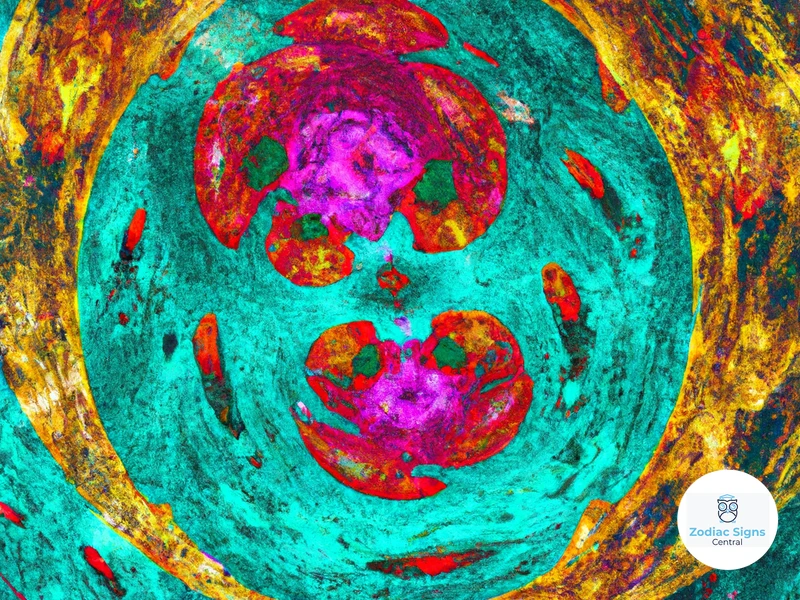
Relationship astrology is a fascinating branch of astrology that utilizes aspects to gain profound insights into the dynamics of interpersonal relationships. By examining the aspects between two individuals’ birth charts, astrologers can uncover the strengths, challenges, and compatibility of their connection. Synastry aspects are used to analyze the interactions between two people, revealing areas of harmony, tension, and potential growth in the relationship. These aspects shed light on the emotional connections, communication styles, and shared goals between partners. In addition to synastry aspects, composite aspects are also utilized, which involve creating a combined chart that represents the essence of the relationship itself. With the help of aspects, astrologers can provide valuable guidance and understanding to individuals seeking insight into their relationships, helping them navigate challenges, celebrate strengths, and cultivate lasting harmony.
1. Synastry Aspects
Synastry aspects play a crucial role in relationship astrology. When analyzing the compatibility and dynamics between two individuals, astrologers thoroughly examine the aspects formed between their respective natal charts. These aspects provide valuable insights into the strengths, challenges, and overall compatibility within a partnership.
Here are some key aspects to consider in synastry:
Conjunction: A conjunction between two individuals’ planets suggests a strong bond and deep connection. It signifies that their energies are combined and working together, creating synergy and compatibility in various aspects of the relationship.
Opposition: An opposition aspect in synastry indicates a polarity and tension between two individuals. It brings complementary energies into the relationship but can also lead to power struggles and conflicts. Finding balance and understanding is essential in managing the challenges posed by the opposition aspect.
Trine: Trine aspects between individuals’ planets signify harmony, ease, and natural compatibility. It suggests that the energies between them flow effortlessly and support one another, making it easier to navigate challenges and cultivate a sense of mutual understanding and support.
Square: Square aspects in synastry indicate tension, conflict, and growth opportunities within a relationship. It signifies areas where individuals may challenge each other or experience clashes. While square aspects may present challenges, they also provide valuable opportunities for personal and relational growth when navigated consciously.
Sextile: A sextile aspect between two individuals’ planets symbolizes support, opportunities, and potential for growth. It fosters a sense of ease and connection, allowing individuals to work together harmoniously and complement each other’s strengths.
Analyzing these synastry aspects helps astrologers understand the dynamics between two individuals. The presence of harmonious aspects, such as trines and sextiles, suggests natural ease and compatibility, while challenging aspects, like squares and oppositions, require conscious effort and communication to manage effectively. By identifying these aspects and interpreting their meanings, astrologers can provide valuable insights and guidance to navigate the complexities of relationships and enhance understanding between partners.
2. Composite Aspects
Composite aspects are an important tool in relationship astrology that provides insights into the dynamics and characteristics of a partnership or relationship. Essentially, composite aspects are created by combining the birth charts of two individuals to form a composite chart, which represents the energy and potential of the relationship itself.
One of the key aspects to examine in a composite chart is the conjunction aspect. A conjunction occurs when two planets are in close proximity to each other in the composite chart. This aspect signifies a strong merging of energies and a sense of unity between the individuals involved.
The opposition aspect in a composite chart represents the potential challenges and conflicts within the relationship. It indicates areas where the two individuals may have different needs, desires, or perspectives that can lead to tension or opposition. However, it is important to note that oppositions also offer opportunities for growth and balance if both partners are willing to work through their differences.
The trine aspect in a composite chart signifies harmony, ease, and mutual understanding between the partners. It suggests that the individuals have compatible energies that flow seamlessly together, promoting cooperation, support, and a natural affinity.
A square aspect in a composite chart represents areas of tension, conflict, and potential growth within the relationship. It highlights differences in values, needs, or approaches that may require compromise and effort to overcome. However, square aspects can also indicate a strong motivating force for personal development and growth within the partnership.
Finally, the sextile aspect in a composite chart suggests a harmonious blending of energies between the individuals. It represents opportunities for cooperation, communication, and positive interactions that can enhance the partnership.
Analyzing these composite aspects provides valuable insights into the dynamics, strengths, and challenges within a relationship. By understanding how the planets of each individual interact in the composite chart, astrologers can assess the compatibility, potential areas of growth, and overall dynamics of the relationship. It is important to remember that while composite aspects offer valuable information, the success and longevity of a relationship depend on a multitude of factors and individual choices.
3. Compatibility Analysis
Compatibility Analysis
Compatibility analysis is a fascinating application of aspects in astrology that focuses on assessing the potential harmony and dynamics between two individuals. By examining the aspects in their respective charts and comparing them, astrologers can gain valuable insights into the compatibility of two people in various areas of life such as love, friendship, and business partnerships.
To conduct a compatibility analysis, astrologers pay special attention to the aspects formed between the personal planets (such as the Sun, Moon, Mercury, Venus, and Mars) as well as the important relationship-focused points like the Ascendant, Descendant, and the 7th house cusp. These aspects highlight the key interactions and connections between the individuals involved, shedding light on the strengths, challenges, and potential areas of growth within their relationship.
One common aspect that astrologers look out for in compatibility analysis is the conjunction. When personal planets or relationship points align closely, it signifies a strong connection and similarity between the individuals. This can foster a sense of understanding, shared values, and compatibility in various aspects of their lives.
Trines and sextiles between personal planets are also seen as positive indicators of compatibility. These aspects suggest a natural flow of energy, easy communication, and a harmonious blending of interests and values. Individuals with these aspects in their charts are likely to find common ground, support, and mutual understanding within their relationship.
However, not all aspects are smooth sailing in compatibility analysis. Squares and oppositions between personal planets can bring challenges and tension to a relationship. These aspects represent areas of conflict, differences in values, and potential power struggles. While these aspects can be challenging, they also provide opportunities for growth, self-awareness, and mutual transformation if both individuals are willing to work through them.
Astrologers also consider the overall balance and distribution of aspects in a compatibility analysis. For instance, a chart with predominantly harmonious aspects might suggest a smoother and more compatible relationship, while a chart with numerous challenging aspects may indicate potential areas of conflict and growth.
It’s important to note that compatibility analysis in astrology is not limited to just romantic relationships. It can also be applied to friendships, family dynamics, and business partnerships, providing valuable insights into the dynamics and potential challenges within these connections.
By utilizing the practice of compatibility analysis, individuals can gain a deeper understanding of their relationships, make informed decisions, and navigate their interactions with greater awareness and insight. Astrology serves as a powerful tool for fostering meaningful connections and supporting individuals in their pursuit of harmonious and compatible relationships.
Case Studies: Practical Application
Case studies provide a practical application of the concepts we have discussed so far, allowing us to see how aspects come to life in real astrology charts. These examples showcase the diverse ways in which aspects can manifest and influence an individual’s life. By examining these case studies, we can gain a deeper understanding of how aspects work and how they contribute to the overall dynamics of a chart. Each case study presents a unique scenario, highlighting specific aspects and their interpretations. These practical examples help bridge the gap between theory and application, providing insights into how to analyze and interpret aspects in a meaningful way. So, let’s dive into these case studies and unlock the secrets held within the celestial patterns of astrology charts.
1. Chart Analysis: Example 1
In this chart analysis example, we will explore how aspects can provide profound insights into an individual’s life. Let’s consider a hypothetical birth chart for Sarah, born on April 10th, 1990.
One of the key aspects in Sarah’s chart is the conjunction between her Sun and Moon. This conjunction suggests a strong blending of her core essence (Sun) and emotional nature (Moon). It indicates that she possesses a deep sense of self-awareness and emotional expression. Sarah may find it easier to align her conscious desires and emotional needs, leading to a harmonious integration of her identity and emotions.
Additionally, we notice a trine aspect between Sarah’s Venus and Mars. This alignment fosters a smooth blending of her feminine (Venus) and masculine (Mars) energies. It suggests that Sarah may possess a natural charisma and magnetism in her relationships, as well as an effortless sense of passion and sensuality. This trine aspect promotes harmony and cooperation between her romantic desires (Venus) and personal drive (Mars), allowing her to pursue her desires with enthusiasm and grace.
Sarah’s chart reveals a square aspect between her Mercury and Neptune. This square suggests a potential challenge in her communication style. Sarah may experience difficulties in clearly expressing her thoughts and ideas, as her mind (Mercury) is influenced by the dreamy and nebulous energy of Neptune. This aspect indicates the importance of cultivating clarity and establishing healthy boundaries when communicating, to avoid misunderstandings or confusion.
By examining and interpreting the aspects within Sarah’s chart, we gain a deeper understanding of her unique personality traits, strengths, and challenges. Analyzing aspect patterns and their interconnections allows us to create a comprehensive and nuanced interpretation of an individual’s astrological chart. Remember, every birth chart is as unique as the individual it represents, and the specific combination of aspects within each chart unveils a rich tapestry of possibilities and potentials.
2. Chart Analysis: Example 2
Let’s dive into a fascinating chart analysis using the example of Jane, born on November 15, 1990. In Jane’s chart, we find an interesting aspect between her Sun and Uranus. The Sun represents her core essence and individuality, while Uranus symbolizes innovation, rebellion, and unexpected changes.
In this particular chart, Jane’s Sun is in a harmonious trine aspect with Uranus. This indicates that she possesses a unique and original personality, unafraid to express her individuality and embrace unconventional ideas. Jane may have an innate ability to think outside the box and come up with innovative solutions to problems. This aspect also suggests that she may be attracted to progressive and avant-garde fields or may have a knack for technology or science.
However, it’s important to examine the house placement of the Sun and Uranus to gain a deeper understanding of how this aspect plays out in Jane’s life. If the Sun is in the 1st house, Jane may exude a sense of independence and self-expression in her personal identity. On the other hand, if Uranus is in the 10th house, Jane may be drawn to a career that involves revolutionizing established systems and challenging the status quo (/significance-midheaven-career-path/).
With this analysis, we see how the aspect between the Sun and Uranus in Jane’s chart highlights her unique qualities and sets the stage for her individuality to shine. Understanding this aspect helps astrologers paint a more comprehensive picture of Jane’s personality, strengths, and potential life path. It serves as a reminder of the importance of considering not only the aspects themselves but also their placement within the houses for a more nuanced interpretation (/saturn-god-time-astrology/).
3. Chart Analysis: Example 3
Let’s explore an intriguing chart analysis using Example 3. In this hypothetical scenario, imagine a birth chart with a prominent aspect between Saturn and Uranus. Saturn symbolizes structure, discipline, and stability, while Uranus represents innovation, sudden change, and rebellion.
The aspect between Saturn and Uranus suggests a tension between tradition and progress, stability and unpredictability. Individuals with this aspect in their chart may have a deep-rooted need for both stability and freedom in their lives. They may find themselves constantly grappling with the tension between adhering to conventional norms and breaking away to pursue their unique vision.
The specific aspects and their planetary placements provide additional layers of understanding. For instance, if Saturn is in the practical sign of Capricorn and Uranus in the independent sign of Aquarius, it intensifies the conflict between structure and rebellion. This combination may lead to a desire to challenge societal norms and create innovative solutions within established systems.
Examining the house placement adds another dimension to the interpretation. For example, if this aspect falls in the 10th house, which governs career and public image, it may indicate a person who challenges traditional career paths and seeks unconventional ways to manifest their ambitions. They may find success in industries that emphasize innovation and change.
Remember, interpreting aspects should always consider the overall chart and other factors present. Each individual’s chart is unique, and the dynamics between Saturn and Uranus can manifest differently depending on the specific placements and aspects involved.
By analyzing Example 3, we can understand how aspects reveal the intricate dance between planets and their energies within an astrology chart. This exercise demonstrates the breadth and depth of information that can be gleaned from chart analysis and how aspects provide valuable insights into the complexities of an individual’s life and personality.
Conclusion
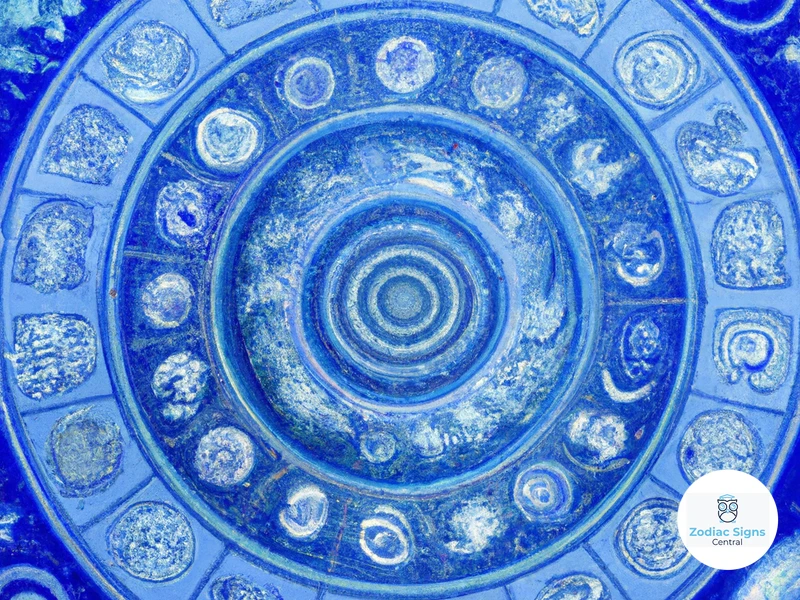
In conclusion, aspects in astrology serve as the intricate threads that weave together the celestial energies within a chart. They provide valuable insights into the dynamics, connections, and influences between planets and points, offering a deeper understanding of one’s personality, relationships, and life events. By studying and interpreting aspects, astrologers can unlock the hidden meanings and patterns within a chart, guiding individuals towards self-discovery, personal growth, and navigating the complexities of life. Aspects play a vital role in relationship astrology, allowing us to explore compatibility and synastry between individuals. Furthermore, through case studies and practical application, we can witness the power of aspects in real-life chart analysis, unraveling their impact on specific individuals and providing valuable insights. In the ever-changing cosmic dance, aspects continue to shape and influence our lives, offering a profound tool for self-reflection, understanding, and empowerment. So, embrace the nuances of aspects, explore their depths, and embark on a fascinating journey of self-discovery through the kaleidoscope of astrology.
Frequently Asked Questions
1. Can aspects change over time?
Aspects in astrology are based on the specific positions of planets at the time of birth, which remain constant. However, the influence and impact of these aspects may evolve and shift as individuals grow, develop, and experience different life events.
2. Are all aspects equally significant?
While all aspects in astrology have their own significance, certain aspects carry more weight and intensity than others. Major aspects, such as conjunctions and oppositions, tend to have a stronger impact on the overall chart dynamics compared to minor aspects like sextiles.
3. Can aspects indicate compatibility in relationships?
Yes, aspects play a crucial role in relationship astrology. Harmonious aspects, such as trines and sextiles, indicate compatibility and ease between individuals, while challenging aspects, like squares and oppositions, may point to areas of tension and growth within a partnership.
4. Do aspects influence career path and success?
Absolutely! Aspects can provide valuable insights into a person’s career potential and path. For example, the Midheaven, a significant point in the chart, forms aspects with other planets that can shed light on one’s vocational strengths, challenges, and potential areas of success.
5. Are retrograde planets important in aspect analysis?
Yes, retrograde planets can have a significant impact in aspect analysis. Retrograde motion indicates a unique energy and introspective focus in a planet, which can add depth and complexity to its interactions with other planets through aspects in the chart.
6. Can aspects change the meanings of planets?
Aspects do not change the inherent meanings of planets themselves. However, aspects modify and color the expression of a planet’s energy, indicating how it interacts and integrates with other planetary energies in the chart.
7. Can the orbs of aspects vary?
Yes, the orbs of aspects can vary depending on the astrologer’s approach and the specific analysis being conducted. Orbs determine the allowable range of degrees within which an aspect can be considered valid and influential.
8. How can aspects in the house placement affect interpretation?
The house placement of aspects adds an additional layer of meaning and context to their interpretation. The specific house in which an aspect falls can provide insights into the area of life where the energies represented by the planets involved are likely to manifest.
9. Can aspect patterns enhance or amplify their meanings?
Absolutely! Aspect patterns, such as stelliums, grand trines, or T-squares, can enhance and amplify the meanings of individual aspects. These patterns create a dynamic interplay between multiple planets, adding depth and complexity to their combined influence.
10. Is it necessary to consult an astrologer to interpret aspects?
While consulting an astrologer can provide expert guidance and deeper insights into astrology aspects, it is not necessary to have professional assistance. With a thorough understanding and study of aspects, individuals can interpret the dynamics of their own charts and gain valuable self-awareness.
References
- Aspects in Astrology: A Guide to Understanding Planetary …
- Planetary Aspects List; Astrology Aspects Meaning …
- Everything You Need To Know About Aspects In Astrology
Frequently Asked Questions
1. How do aspects in astrology affect a person’s personality?
Aspects in astrology represent the relationships between different planets in a person’s chart. These aspects can shape a person’s personality by influencing their strengths, weaknesses, and behavioral patterns.
2. What is the significance of the strength of an aspect in an astrology chart?
The strength of an aspect in an astrology chart determines its impact on the individual. A strong aspect indicates a more prominent influence, while a weak aspect may have a more subtle effect.
3. How can I identify major aspects in my astrology chart?
To identify major aspects in your astrology chart, look for planetary pairs that are tightly aligned. These include conjunctions, oppositions, trines, squares, and sextiles. These aspects tend to have a significant impact on your life.
4. What are aspect patterns and how do they affect an astrology chart?
Aspect patterns refer to unique configurations formed by multiple aspects in an astrology chart. They add depth and complexity to the individual’s personality and can provide insights into specific areas of their life.
5. How can I interpret aspect interactions in my astrology chart?
Interpreting aspect interactions involves analyzing how different aspects in your chart connect and interact with each other. This helps understand the relationships between various areas of your life and how they influence each other.
6. What role do orbs play in astrology aspects?
Orbs in astrology represent the allowable degree of difference between planets for an aspect to be considered valid. Understanding orbs helps determine the strength and significance of an aspect in relation to the individual’s life.
7. How can astrology aspects be used in relationship analysis?
Astrology aspects are instrumental in relationship analysis. Synastry aspects examine the compatibility between two individuals, while composite aspects reveal the dynamics and potential of a relationship as a separate entity.
8. How do aspects influence house placement in astrology?
Aspects influence house placement by indicating how certain planetary energies align with specific areas of life represented by the houses in an astrology chart. These interactions shed light on how the individual experiences and expresses different facets of their life.
9. Can astrology aspects help determine relationship compatibility?
Astrology aspects are valuable in determining relationship compatibility. By comparing the aspects between two individuals’ charts, astrologers can gain insights into the strengths, challenges, and dynamics of the relationship.
10. Are astrology aspects fixed throughout life or do they change over time?
Astrology aspects are not fixed throughout life. As the planets continue their movements, aspects between them change dynamically. These changes can bring new opportunities, challenges, and shifts in how aspects influence an individual’s life.




